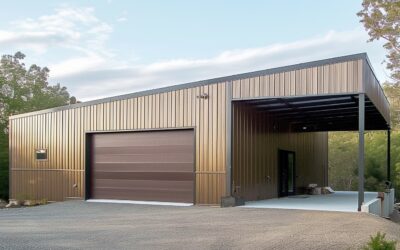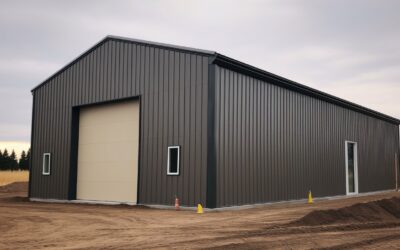Over the course of human history, agriculture has been a driver of societal and economic evolution. It’s a story of constant adaptation, as farmers have been shaping and reshaped by the lands they cultivate. Today, the narrative of agricultural evolution has a new chapter as steel is dynamically shaping farm facilities. This seismic shift is happening right beneath our feet, or rather, above our heads, under the unyielding structure of steel farm buildings.
The Global Agricultural Shift to Steel
From the onset, the transformation is undeniable. From the rustic charm of traditional wooden barns to the bold strength of modern steel structures, the landscape of rural economy is changing. Across the globe, a growing number of farmers are opting for structures primarily made of steel, leading to a wave of steel shaping farm facilities.
When viewing current steel building trends in agriculture , there are a multitude of reasons farmers are making the shift. Improved durability, flexibility of designs, and cost efficiency are just some factors driving the adoption of steel buildings in agriculture.
Increased Durability and Sustainability
Anyone who’s worked on a farm knows that durability is the name of the game. In this sense, steel provides an unbeatable advantage. Its resistance to harsh weather conditions, pests, and fire keeps steel barns and agricultural buildings standing strong for decades. Additionally, steel’s recyclability and low maintenance requirements make it a green choice, aligning it with the growing movement towards sustainable agriculture.
Design Flexibility and Space Utilization
As the functions of farm facilities become more diversified, there is an increasing demand for design flexibility and efficient space utilization. Steel’s inherent strength allows for clear-span structures that eliminate the need for internal load-bearing walls – essential when designing diversified spaces like a modern metal barn. Farmers can fully optimize the spatial layout, achieving both functional efficiency and aesthetic appeal in their farm facility designs.
Cost-efficiency and Rapid Construction
When considering all the benefits of steel agricultural buildings, one cannot ignore the budget-friendly factor. Not only does steel’s long lifespan and low maintenance needs save farmers’ long-term costs, but its lightweight nature also reduces transport costs. Additionally, modern steel prefabrication technology has streamlined the construction process, making the setup of steel structures faster and more efficient than traditional methods.
Quality Assured by Leading Organizations
The widespread use of steel in agriculture also has backing from reputable industry organizations, including the American Institute of Steel Construction. These organizations play a crucial role in setting high-quality standards for steel constructions and advocating for their benefits. Their endorsement provides farmers with further assurance of the quality and dependability of their steel farm buildings.
Conclusion
In conclusion, the shift towards steel shaping farm facilities is a testament to agricultural evolution. It embodies the drive for improvement and advancement that has marked farming history. The adoption of steel structures provides numerous benefits, from durability and flexibility, to sustainability and cost-efficiency. As farmers continue to leverage these advantages, it seems inevitable that we will see an increasing number of steel structures dotting our agricultural landscapes. So, next time you come across a steel barn or agricultural building, remember: you’re witnessing a living, breathing part of the unfolding story of agricultural evolution.
Agricultural evolution isn’t just about a change of physical structures; it’s also about our evolving understanding of how best to sustain and cultivate the land that sustains us. With the advent of steel shaping farm facilities, this understanding is just becoming clearer. Always remember, as the age-old saying goes, “Old ways won’t open new doors.” So then let’s applaud our innovative farmers who, in their steadfast determination to open new doors, are leading the evolution of agriculture. As they forge ahead, may they continue to reshape our world for the better.





